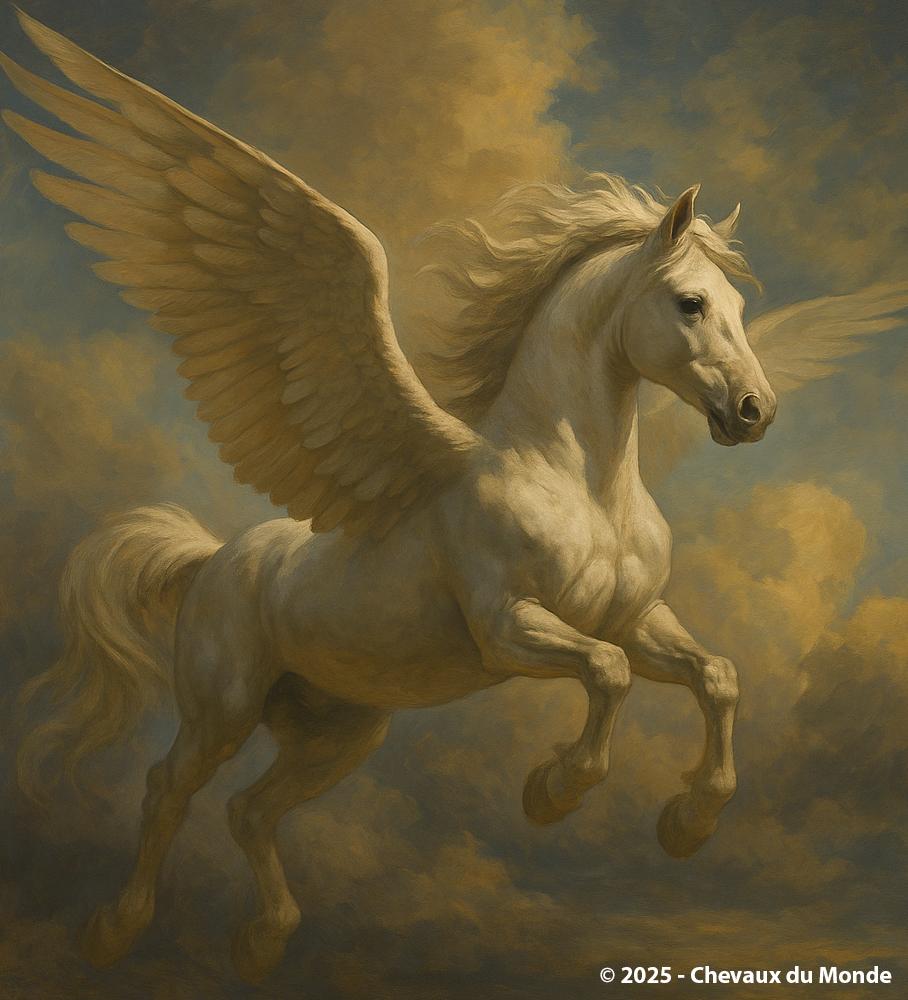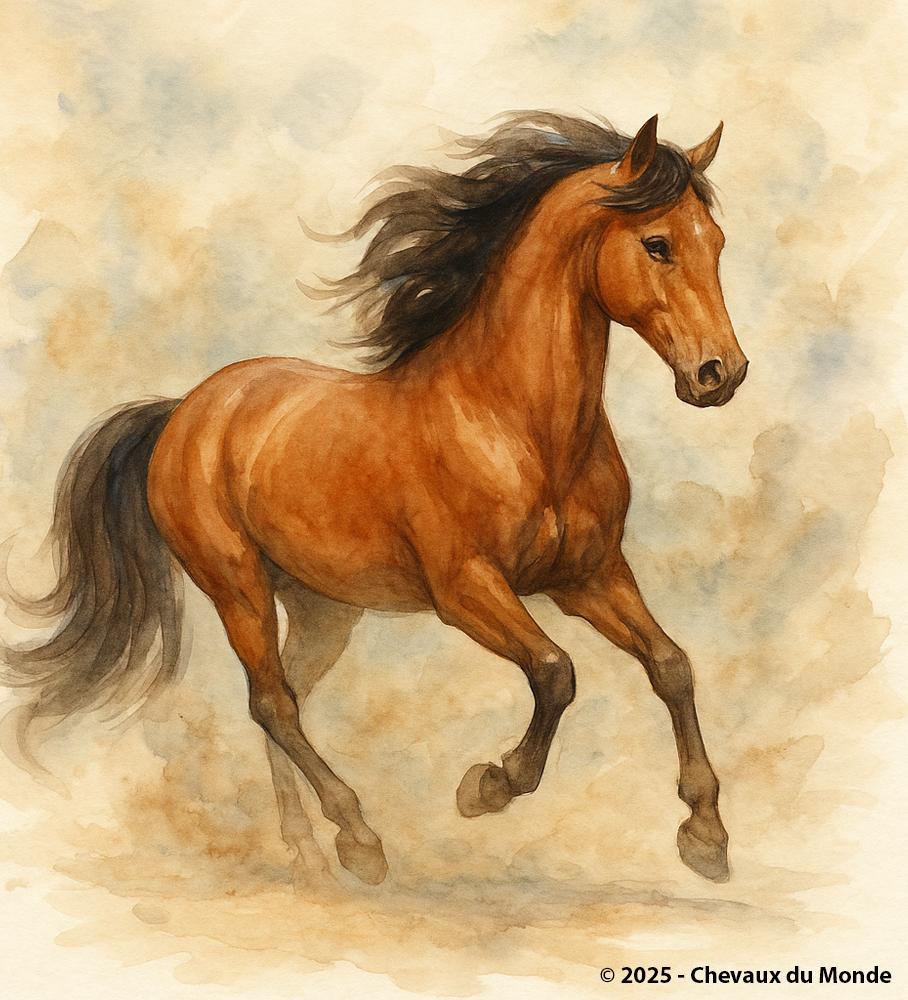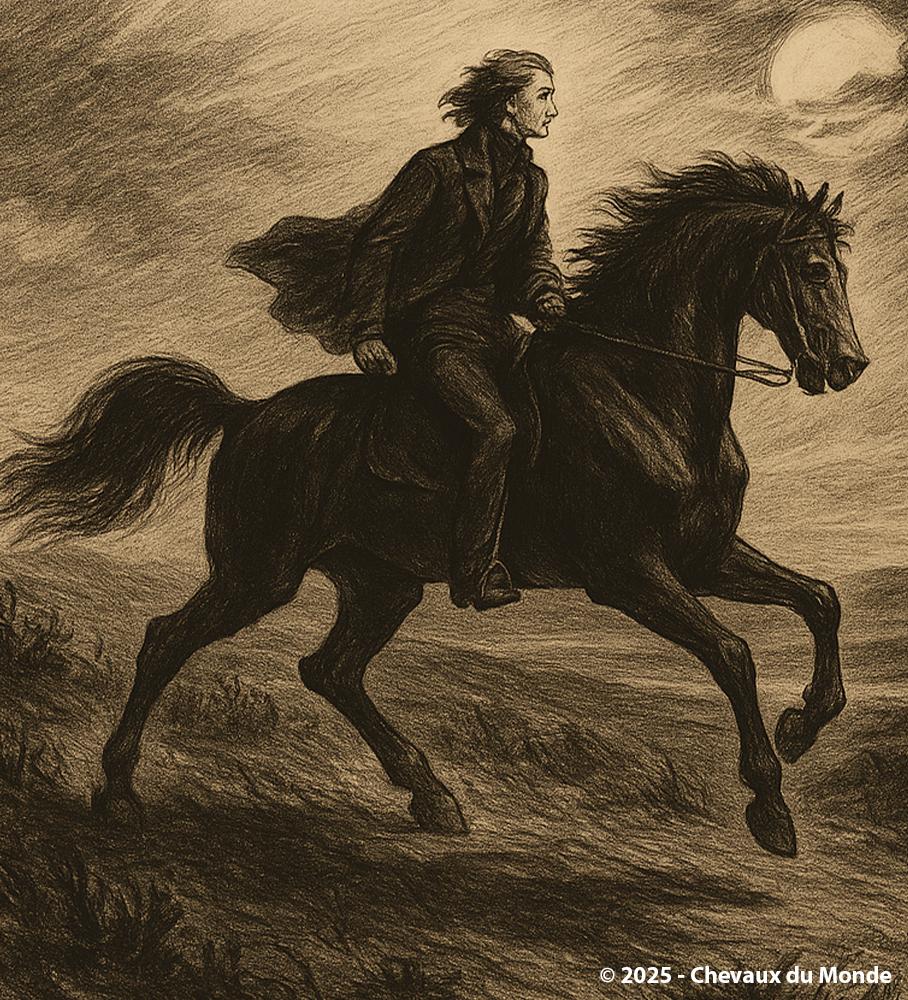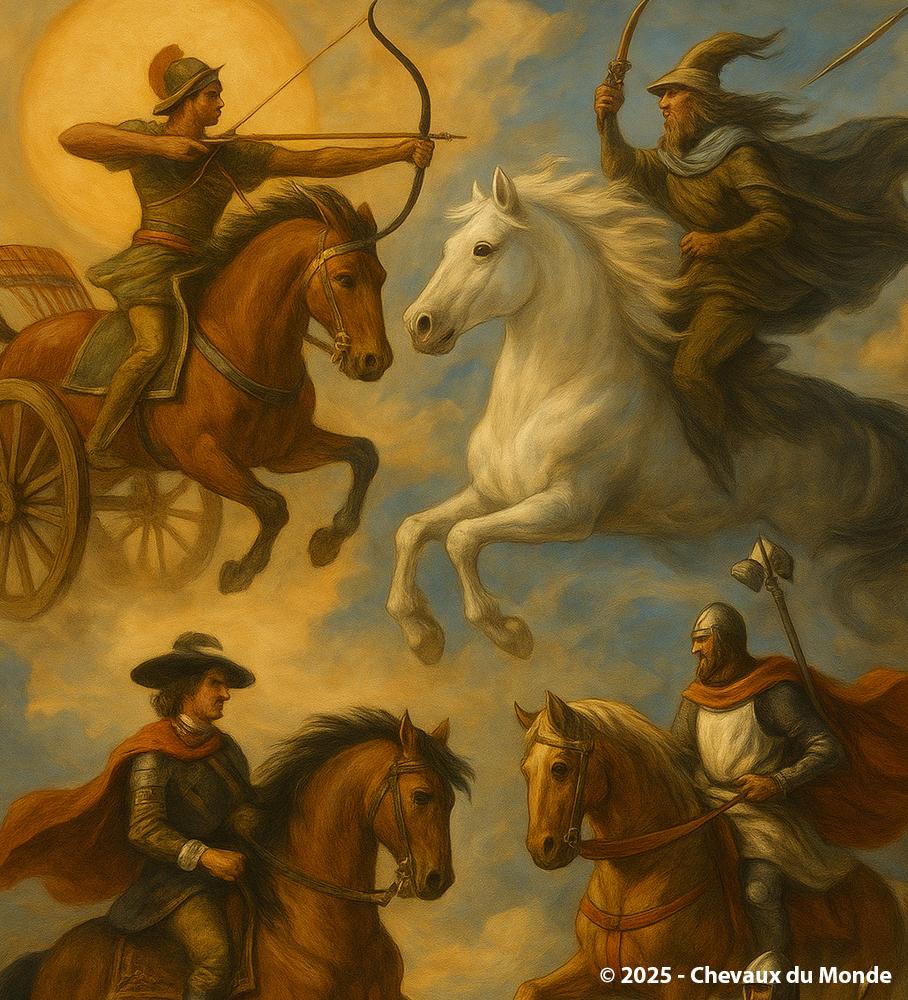HORSES IN NORSE TALES AND LEGENDS
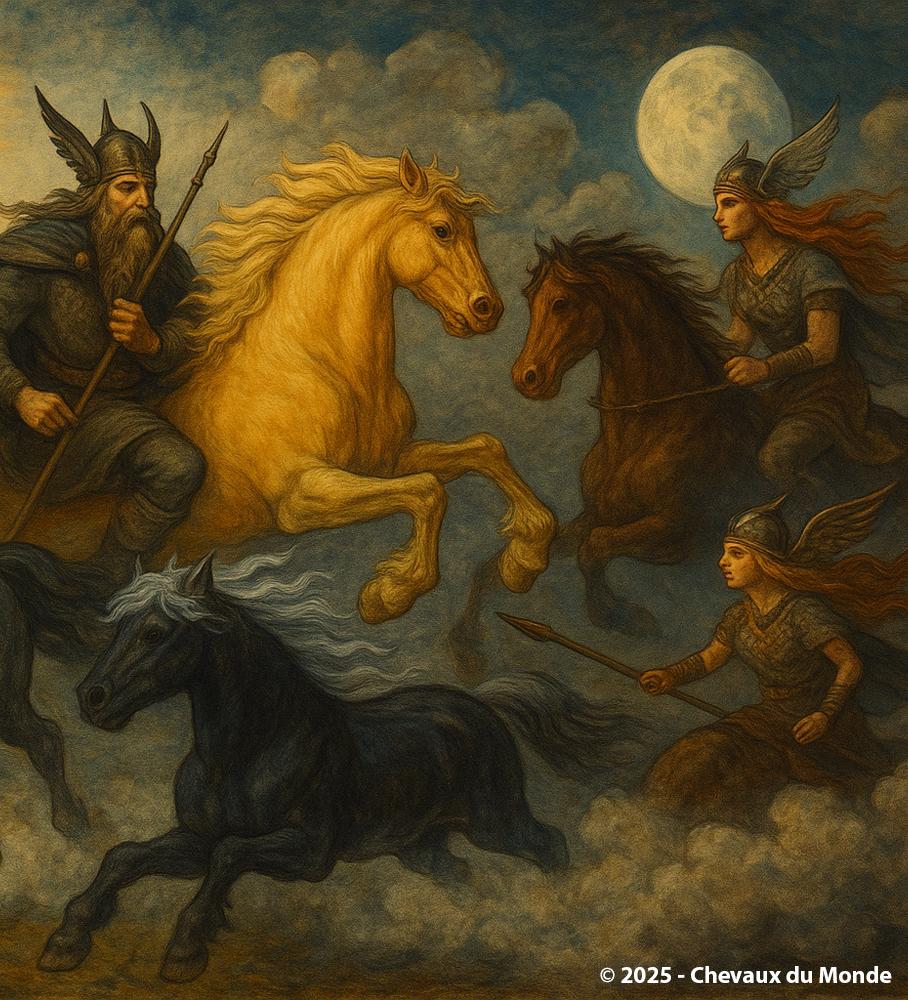
Divine steeds and warrior spirits: in Norse legends, horses accompany gods and Valkyries across the skies and into battle.
In Norse mythology, the horse holds a central place as a divine mount, supernatural creature, or symbol of power. From Icelandic sagas to the epic poems of the Eddas, it embodies speed, strength, and the connection between the world of the living and the world of the gods. The horses of Norse legends are not mere animals: they are endowed with powers, deep symbolism, and take part in cosmic narratives.
Sleipnir: Odin’s Horse
The most famous of the Norse horses is Sleipnir, the steed of the god Odin.
- He is described as a grey stallion with eight legs, capable of crossing the sky and the sea.
- His origin is unique: he was born from the union of Loki, transformed into a mare, and the stallion Svaðilfari.
- Sleipnir symbolizes supernatural speed, the ability to travel between worlds, and is considered the noblest of all horses.
Thanks to him, Odin can roam Ásgard, Midgard, and Hel, thus connecting the realms of the gods, men, and the dead.
The Solar and Lunar Horses
In Norse cosmology, the cycle of day and night is also ensured by divine horses:
- Skinfaxi (“shining mane”) pulls the chariot of the day, illuminating the world with the brilliance of his mane.
- Hrímfaxi (“frost mane”) pulls the chariot of the night, covering the earth with dew from the foam of his mouth.
These two horses highlight the importance of cosmic symbolism, where the horse is the very engine of the universe.
The Steeds of Gods and Heroes
Beyond Sleipnir, many Norse gods and heroes possessed remarkable steeds:
- Gullfaxi (“golden mane”), the horse of Hrungnir, later given to Magni, son of Thor.
- The horses of the Valkyries, warrior maidens, who rode through the skies to bring fallen warriors’ souls to Valhalla.
- In the Icelandic sagas, some horses play an almost prophetic role, guiding their masters in battle or revealing their destiny.
Thus, the horse appears as a sacred companion, associated with victory and fate.
The Role of the Horse in Norse Rites and Beliefs
For the ancient Scandinavians, the horse was present not only in myths but also in religion and society:
- Horse sacrifices were performed during religious ceremonies to honor the gods and secure fertility and prosperity.
- Horses were sometimes buried alongside warriors and chieftains, to accompany them into the afterlife.
- Archaeological sites from the Iron Age in Scandinavia have revealed ritual horse remains, confirming the animal’s spiritual importance.
The Horse as a Symbol of Passage
In Norse mythology, the horse also represents the means of crossing boundaries between worlds:
- Sleipnir carries Odin into the realm of the dead.
- The Valkyries ride across dimensions to guide souls.
- The solar and lunar horses ensure the continuity between day and night.
Thus, the horse is both psychopomp, messenger, and guardian of cosmic balance.
Conclusion
The horses of Norse tales and legends are not ordinary mounts: they are mythical, magical, and sacred.
They connect gods and men, life and death, day and night. From Sleipnir to Skinfaxi, each horse illustrates a facet of Scandinavian spirituality and confirms the importance of this animal in the Norse imagination.
"In both sagas and rituals, the horse is the link between the earthly world and the divine realms."

